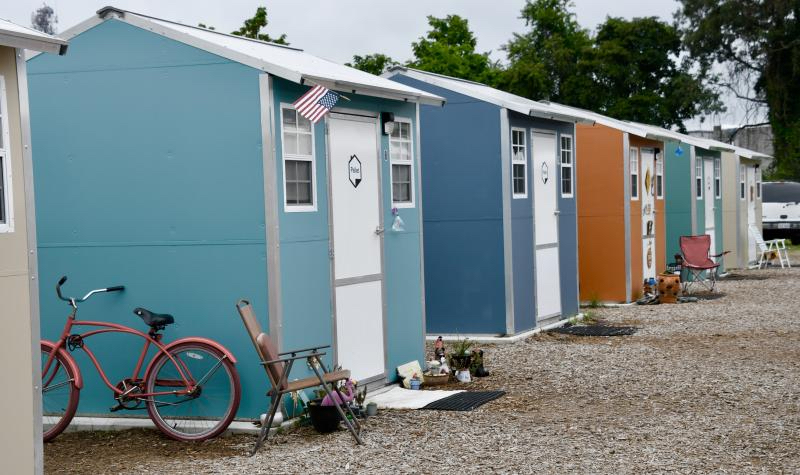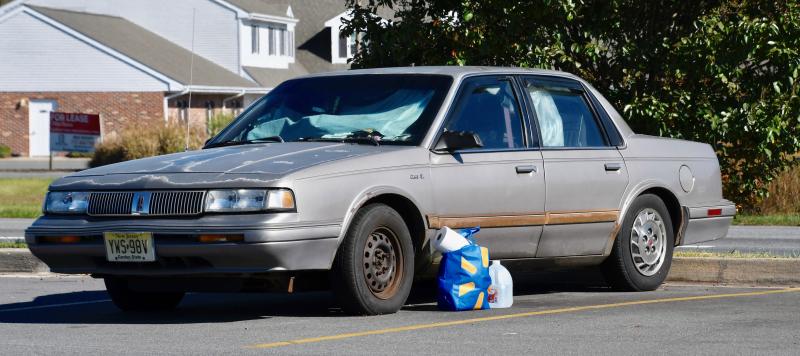Emotions are raw during Milford’s Springboard presentation
Emotions were running high as Milford City Council collected public input on a proposed homeless village during a Jan. 22 public hearing.
Springboard Collaborative Executive Director Judson Malone said federal funds are available to establish another village similar to the one the collaborative opened in Georgetown a year ago. He said the location is yet to be determined, although some Milford officials have expressed interest in the project.
Milford Mayor Archie Campbell said there is no agreement with council. “We have a plan, but we need to find out what the people in Milford want,” he said.
And mayor and council got an earful from dozens of supporters and opponents.
There was some common ground. Most agreed that providing assistance to the homeless is needed, and also that affordable housing and rentals are lacking in Milford, which can exacerbate homelessness.
Location and funding were the two main issues raised by those in opposition. Proponents said a shelter is long overdue and is a first step to keeping the homeless out of tents in the woods.
For and against
Dozens of people testified for and against the project, with a 3-minute time limit imposed. Council members also posed several questions to Malone.
Those opposed said they are not against helping the homeless, but building a village in downtown Milford would be a mistake.
They also expressed concerns about funding if the village is built within city limits, and they were also alarmed that the program does not require ongoing drug screening. Residents do not have to be clean and sober to live in the Georgetown village.
Many of those who spoke were Milford business people.
Most who testified in favor were from organizations and agencies devoted to helping the homeless and low-income residents, including several Code Purple shelter volunteers.
Fourth Ward Councilwoman Katrina E. Wilson made an impassioned plea. “Milford doesn’t have a homeless shelter. Shame on us,” she said. “If we can provide a hand up with the right restraints that keep everyone safe in the community, why wouldn’t we want to do it?”
Shelter would be a start
Martha Gery, founder and president of Milford Advocates for the Homeless, said the organization provided case management to more than 200 homeless people in 2023.
“Let’s work through the logistics and get something going,” she said.
Billy Deverry offered to provide a reasonable lease for 4 acres of land he owns just outside city limits on Cedar Beach Road.
Michael Rourke, a Code Purple volunteer, said he has learned that homeless people are no different from anyone else. “They have hopes and dreams like we have hopes and dreams. We need to do what we can to lift them up,” he said.
Holly Johnson, who was a social worker for 15 years, said people have to wait at least three to five years for subsidized housing, and obtaining a Section 8 voucher takes more than five years.
“We are overwhelmed. We need houses, and this is a step in the right direction,” she said.
She said the homeless population has increased 103% since 2019.
Location and funding
Sen. Bryan Shupe, R-Milford, said he was speaking as a citizen and not representing the General Assembly.
“You don’t have to be against the homeless not to support this project,” he said.
He said a homeless village would attract more homeless to come to the community. He said he has spoken to police officers in Georgetown who told him three more homeless encampments have appeared since the collaborative village opened. “More are coming to Georgetown from other areas. And 30% of all EMS calls are at the encampments," he said.
He said if built within city limits, a village would eventually put a strain on the city’s resources, and more attention should be paid to building affordable housing by providing incentives to developers.
“This will not cause the positive impact people think it will,” he added.
John Davis, who lives in Milton and owns property in Milford, said homeless people camp in a woods area he owns in Georgetown near the village. “I have an issue with the Georgetown facility because it has brought more people to the area. There were 20 people living in my woods, and now there are 40 people there,” he said.
He said police have asked him to get the people off the property, but he will allow them to stay until he develops the parcel.
“I don’t want to see this in my hometown. People here have worked hard to get the slice they have,” he said.
“They must complete drug and alcohol testing to keep our community safe,” said Yolanda Messick. “They must be held to a standard.”
Stuart Bozievich said he’s concerned about long-term costs. “The cost will fall on the taxpayers. When the state funds stop, Milford will have to pick up the cost,” he said.
Howard Twyford said he doesn’t want to see all of the efforts taken to revitalize the downtown area be deteriorated. He said there would be more crime, more calls for EMS and more panhandling. “The solution is affordable housing,” he said.
Adam Brownstein, a member of the Milford School District Board of Education, said a 10-year plan for funding is needed before a project moves forward.
“What’s the end game?” he asked. “There is no low-income housing. Tell me what the end game is and the steps A, B and C that get people to the finish line with infrastructure in place.”
About the village
Malone said the collaborative has a $1.4 million American Rescue Plan Act grant for a new project, and ongoing funding comes from other grants, donations and banks. “But we realize that’s not sustainable. Our intent is to get state funding commensurate with the scale of the homeless problem. The state would then contract with us or another nonprofit,” he said.
The Georgetown Pallet Village has 40 shelters, each 64 square feet, along with an on-site bathroom and shower facility, and a community center. All meals and case management services are provided. “We are maxed out right now,” Malone said.
He said the goal is to get residents into independent living within two years, and 20 residents have already found permanent housing.
Malone said residents don’t have to be clean and sober to be accepted. He said while treatment is suggested, each person makes their own decision.
Residents can’t use drugs or alcohol on the premises. “When people make up their minds for treatment, it’s a lot more successful,” he said.
Malone said navigators work with 20 people to connect them to services, including treatment, healthcare including mental health, financial planning and job searches.
“We get them in a safe place, and then they can focus on their lives. They can’t heal themselves in the woods,” he said.
Malone said the Georgetown village has not contributed to an increase of homeless in the town. “Data shows that the homeless population is rising because of a lack of housing. That’s why an interim housing solution is so important,” he said. “It’s not a magnet, but there are those wanting to get on the waiting list.”
Malone said most homeless villages are on public land, and the Georgetown village is on First State Community Action Agency land.
“It’s always a temporary process, and we can move a village,” he added. “Our Georgetown village is a pilot project and we pay nominal rent.”
























































